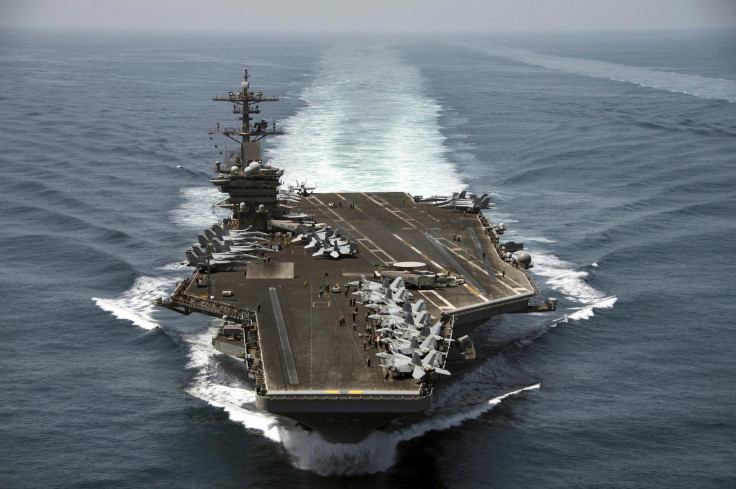China building world’s longest aircraft carrier

Even as South China Sea is causing tension between China and the US and allies, China is reportedly going ahead with building its second aircraft carrier base at South China Sea’s Hainan island with capabilities to deploy guided missile nuclear submarines. According to reports, it will be the longest in the world. The news was reported by Canada-based Asian security magazine, Kanwa Asian Defence Review.
The report said China has completed basic construction work on a 700 meter-long dock at its Sanya naval complex in Hainan province in November 2014. This will be second Army Navy aircraft carrier base of China, aiming to service ships on both sides and can accommodate two aircraft carriers at a time. At present, China has only one aircraft carrier, Liaoning. Some reports say that more aircraft carriers will be built by China in the coming years for sending its navy far from shores to safeguard Chinese interests overseas.
Strategic location
According to the defence report, Hainan has been chosen for many reasons. Number one is the strategic location. Other factors include complete defence facilities and the ability to deploy guided missile nuclear submarines. Ma Yao, a researcher from Shanghai International Studies University noted that Hainan is a highly strategic location and closer to three strategically important straits - Malacca Strait, Lombok Strait and Sunda Strait, which helps in easier compilation of naval fleets.
According to Ma, submarines are inseparable forces in the composition of a naval fleet and for China there is no better place than South China Sea in having them. “The Hainan base is good for the effectiveness of navy's nuclear force with its deeper waters and wider rims. That is why China has in recent years deployed guided missile nuclear submarines in the South China Sea," the researcher said.
Unsinkable carriers
Meanwhile, a defence analyst Michael O’hanlon urged the US to exercise restraint on China’s artificial islands in South China Sea. In a blog for the Wall Street Journal, the analyst said while the US builds aircraft carriers and sails them into the seas, Beijing is establishing regional military presence in a different way. The difference is, while America builds carriers, Chinese are building islands. The US can justify its world-wide naval activities in support of freedom of navigation, based on the 1983 Law of the Sea Convention. He said, technically the US is right in objecting to aggressive Chinese behavior and asserting its navigational prerogatives near new Chinese land formations, which under the Law of the Sea are not real islands with associated territorial or economic waters.
In his view, the US can consider these islands as unsinkable aircraft carriers. The analyst also argued that China’s claim to sovereignty throughout the region covered by its “nine-dash line” is unacceptable and the US needs to assert the freedom of navigation. At the same time, a few man-made islands with a squadron of fighter aircraft should not be made out a big surprise or big deal.
(For feedback/comments, contact the writer at feedback@ibtimes.com.au or let us know what you think below)






